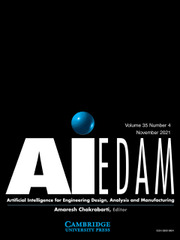No CrossRef data available.
Article contents
A semi-supervised anomaly detection approach for detecting mechanical failures
Published online by Cambridge University Press: 13 November 2024
Abstract
Predictive maintenance attempts to prevent unscheduled downtime by scheduling maintenance before expected failures and/or breakdowns while maximally optimizing uptime. However, this is a non-trivial problem, which requires sufficient data analytics knowledge and labeled data, either to design supervised fault detection models or to evaluate the performance of unsupervised models. While today most companies collect data by adding sensors to their machinery, the majority of this data is unfortunately not labeled. Moreover, labeling requires expert knowledge and is very cumbersome. To solve this mismatch, we present an architecture that guides experts, only requiring them to label a very small subset of the data compared to today’s standard labeling campaigns that are used when designing predictive maintenance solutions. We use auto-encoders to highlight potential anomalies and clustering approaches to group these anomalies into (potential) failure types. The accompanied dashboard then presents the anomalies to domain experts for labeling. In this way, we enable domain experts to enrich routinely collected machine data with business intelligence via a user-friendly hybrid model, combining auto-encoder models with labeling steps and supervised models. Ultimately, the labeled failure data allows for creating better failure prediction models, which in turn enables more effective predictive maintenance. More specifically, our architecture gets rid of cumbersome labeling tasks, allowing companies to make maximum use of their data and expert knowledge to ultimately increase their profit. Using our methodology, we achieve a labeling gain of 90% at best compared to standard labeling tasks.
- Type
- Research Article
- Information
- Copyright
- © The Author(s), 2024. Published by Cambridge University Press



